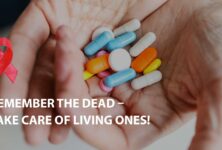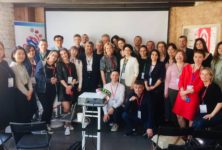More than 15,000 people gathered in Amsterdam today for the opening of the 22nd International AIDS Conference (AIDS 2018), where leaders focused on the major new investments, science-based policies and the political will needed to put the HIV response back on track.
The conference will feature the latest science on innovations in treatment, cure and prevention and the new on-the-ground strategies to address inequities in HIV policies and programmes. Nearly 3,000 abstracts will be presented from more than 100 countries.
“AIDS 2018 will provide a powerful platform for those most affected by HIV and feature breaking science that will address the most pressing challenges,” Linda-Gail Bekker, the President of the International AIDS Society (IAS) and International Scientific Chair of AIDS 2018, said.
“The biggest barriers now to ending the epidemic are ideologically and politically driven. Together, we will hold policy makers and donors accountable to the evidence – the end of AIDS will only come from prioritizing science-based policies, ensuring adequate funding and working hard together to be certain that no one is left behind.”
Amsterdam previously hosted the conference in 1992.
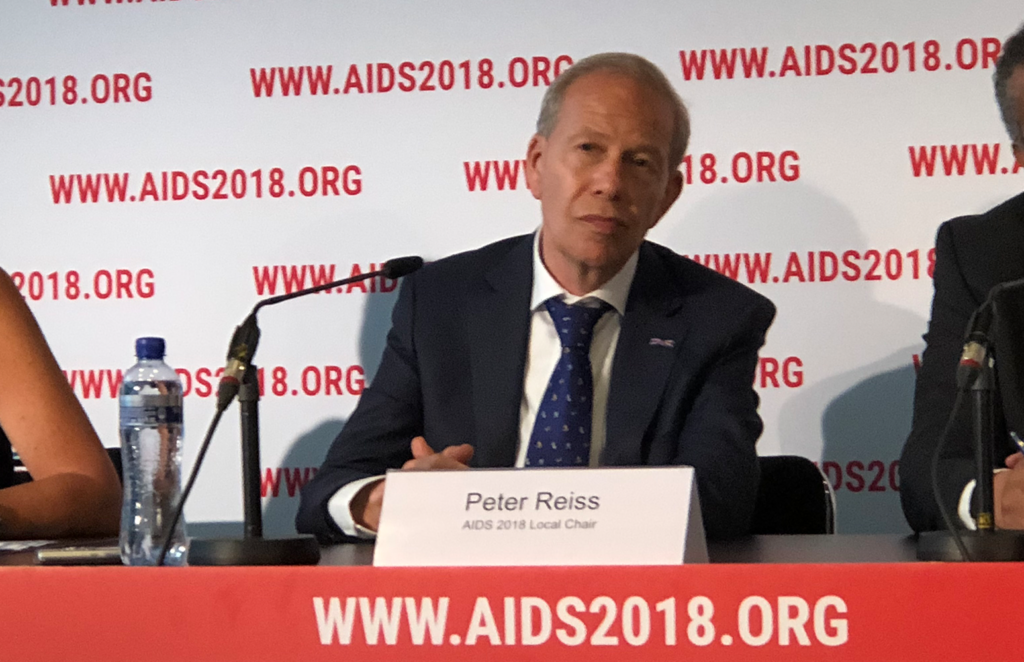
Peter Reiss, Local Chair of AIDS 2018 and Professor of Medicine, Amsterdam University Medical Centers, University of Amsterdam
“Today, Amsterdam is a Fast-Track City, vigorously accelerating efforts to meet the global goal of ending AIDS by 2030,” Peter Reiss, Local Chair of AIDS 2018 and Professor of Medicine, Amsterdam University Medical Centers, University of Amsterdam, said. “Since the peak of its epidemic, the Netherlands faced the challenge of HIV and AIDS head on, embracing scientific evidence and working with populations that other countries marginalized and stigmatized.”
Yet next door in Eastern Europe and Central Asia, new infections are up 30% since 2010.
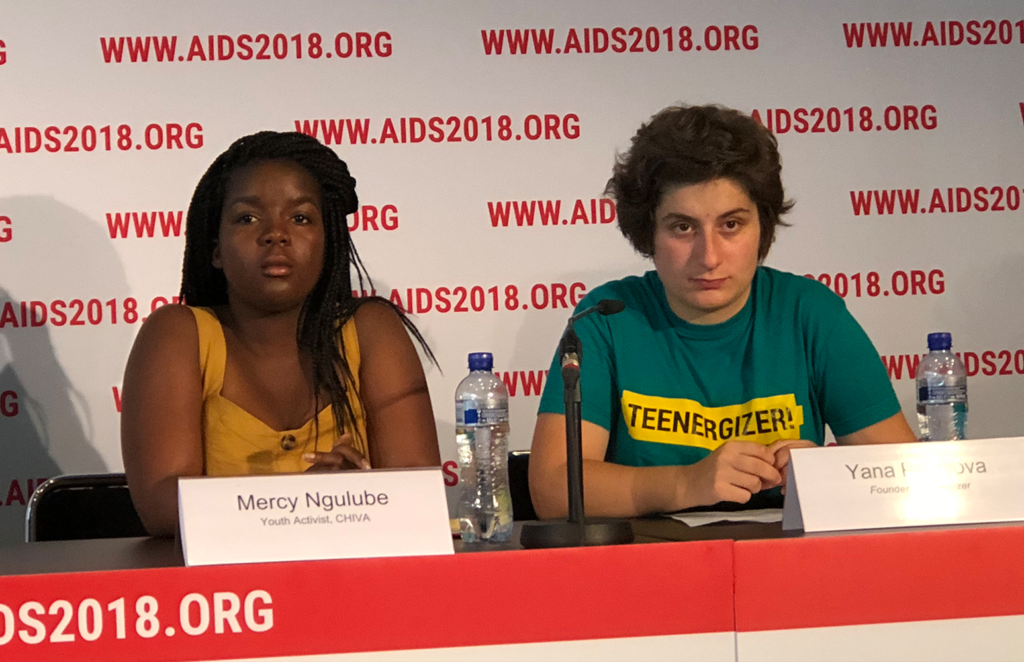
Mercy Ngulube and Yana Panfilova
“Eastern Europe and Central Asia is the only region in the world where HIV is rapidly increasing,” Yana Panfilova, founder of the Ukrainian youth advocacy organization, said. “Getting tested to learn your status is a challenge in our region, especially for young people like me.”
Globally, more people than ever before – 21.7 million – are on treatment. However, the newly released IAS-Lancet Commission report stated that the HIV epidemic is not on track to end by 2030. It also showed that integration in diverse epidemic settings is highly cost effective and offers “win-win” results, improving both HIV-related and non-HIV-related health outcomes.
“No one should go without treatment or die from HIV because of lack of access to basic healthcare,” Tedros Adhanom Ghebreyesus, Director General of the World Health Organization, said. “HIV prevention and care must be part of the fight for universal health coverage. That means recognizing universal health coverage as a right for all people, no matter how marginalized.”
World-renowned artist Conchita said: “We need to talk about HIV and AIDS the way we talk about any other illness in order to end the cruel stigma and discrimination that comes with this specific disease. People need to know that ‘HIV positive’ is just a diagnosis and that with access to the right treatment, an HIV-positive person can achieve viral suppression and can carry on pursuing their passions and realizing their dreams.”
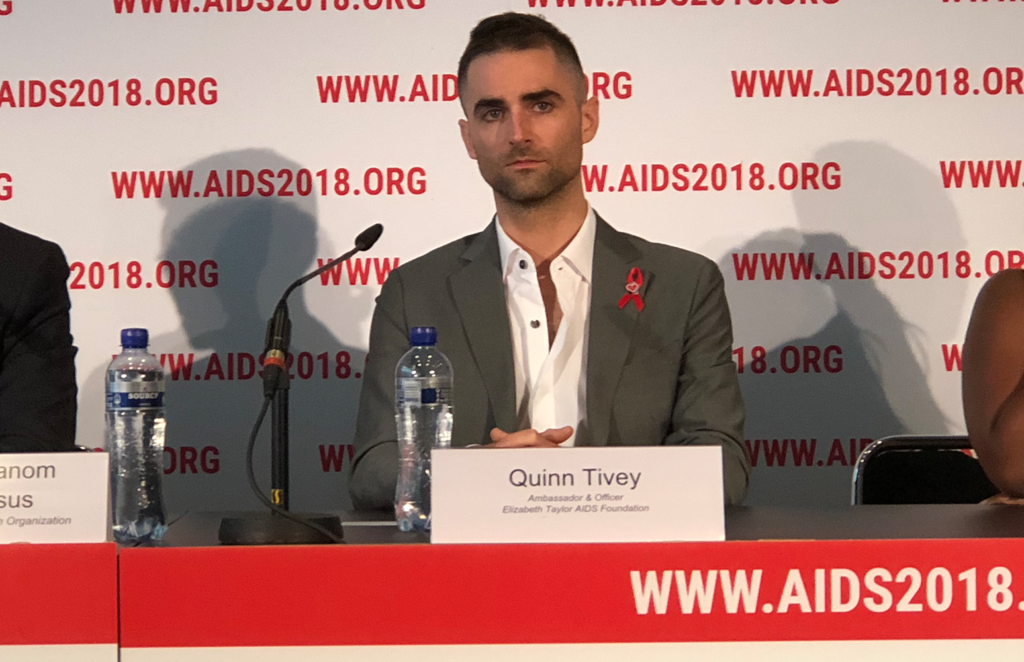
Quinn Tivey of the Elizabeth Taylor AIDS Foundation
Quinn Tivey of the Elizabeth Taylor AIDS Foundation, grandson of Dame Elizabeth Taylor, said: “We have seen a seismic shift in the 26 years since my grandmother spoke at the 8th International AIDS Conference here in Amsterdam. But we can’t stop here. We know from history that advancements in HIV science, treatment and prevention require strong voices like hers demanding that world leaders take action.”
Young women in particular remain at risk of HIV. Four in 10 adolescent girls in Africa have experienced physical or sexual violence from an intimate partner, which increases the likelihood of acquiring HIV.
At the opening ceremony, conference organizers announced that young people would take centre stage at AIDS 2018 – and that youth and junior investigators made up more than one third of the studies that will be presented at the conference.
“Having always lived with HIV, it’s fascinating to look back at the developments over my lifetime of 20 years,” youth activist Mercy Ngulube said. Referring to the AIDS 2018 theme – Breaking Barriers Building Bridges – she added: “I am hopeful that one day, we can and will see an end to this epidemic because we’ve built the right bridges and broken down the remaining barriers.”


 ПОИСК ПО САЙТУ
ПОИСК ПО САЙТУ  поиск по ресурсному центру
поиск по ресурсному центру 